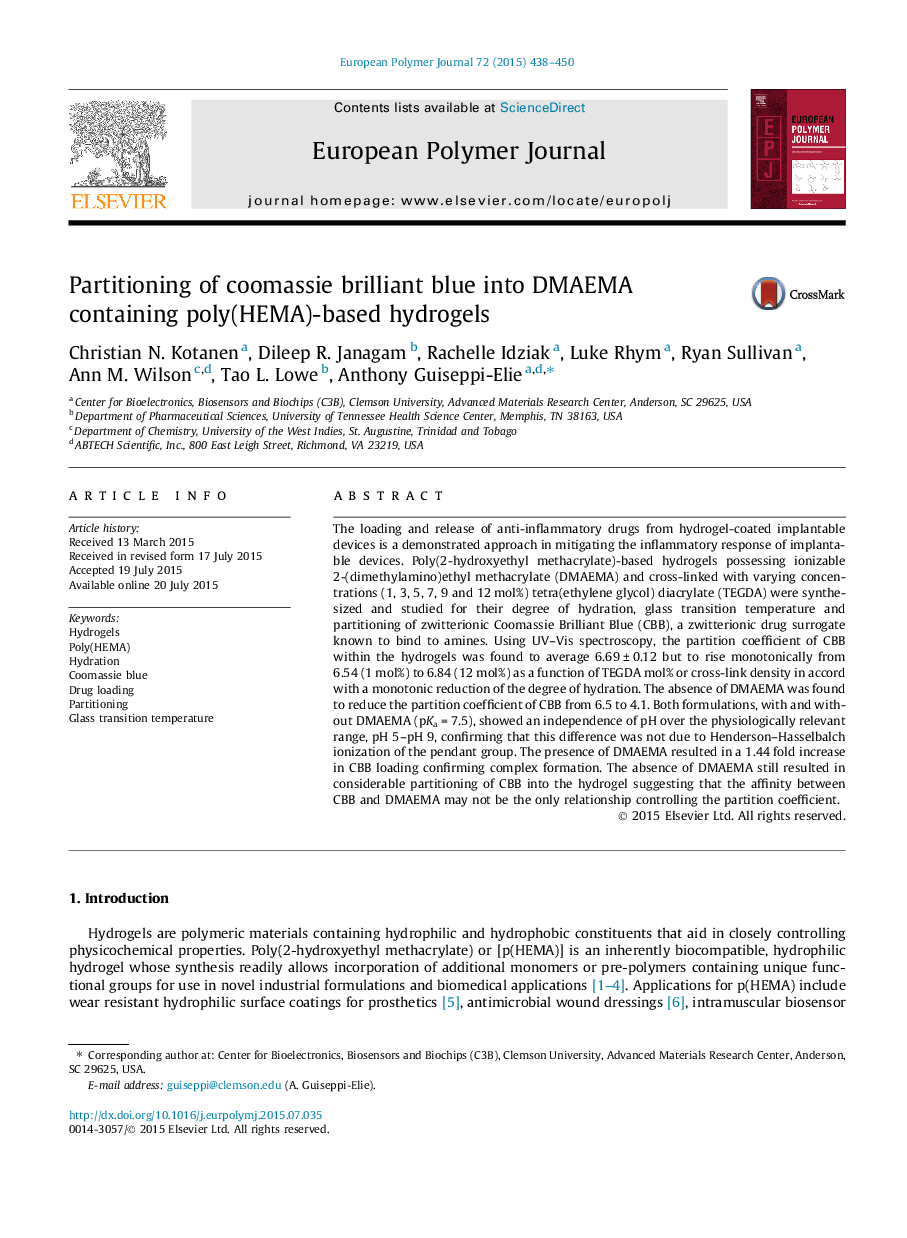| کد مقاله | کد نشریه | سال انتشار | مقاله انگلیسی | نسخه تمام متن |
|---|---|---|---|---|
| 1394683 | 1501363 | 2015 | 13 صفحه PDF | دانلود رایگان |

• The partitioning of coomassie brilliant blue into poly(HEMA)-based hydrogels is studied.
• Coomassie brilliant blue sorbs onto the inner surfaces of poly(HEMA)-based hydrogels in Langmurian fashion.
• The water content is decreased with increased cross-link density.
• The sorption capacity is increased with increased cross-link density.
• Replacing 5 mol% HEMA with 5 mol% DMAEMA decreases hydration but increases sorption.
The loading and release of anti-inflammatory drugs from hydrogel-coated implantable devices is a demonstrated approach in mitigating the inflammatory response of implantable devices. Poly(2-hydroxyethyl methacrylate)-based hydrogels possessing ionizable 2-(dimethylamino)ethyl methacrylate (DMAEMA) and cross-linked with varying concentrations (1, 3, 5, 7, 9 and 12 mol%) tetra(ethylene glycol) diacrylate (TEGDA) were synthesized and studied for their degree of hydration, glass transition temperature and partitioning of zwitterionic Coomassie Brilliant Blue (CBB), a zwitterionic drug surrogate known to bind to amines. Using UV–Vis spectroscopy, the partition coefficient of CBB within the hydrogels was found to average 6.69 ± 0.12 but to rise monotonically from 6.54 (1 mol%) to 6.84 (12 mol%) as a function of TEGDA mol% or cross-link density in accord with a monotonic reduction of the degree of hydration. The absence of DMAEMA was found to reduce the partition coefficient of CBB from 6.5 to 4.1. Both formulations, with and without DMAEMA (pKa = 7.5), showed an independence of pH over the physiologically relevant range, pH 5–pH 9, confirming that this difference was not due to Henderson–Hasselbalch ionization of the pendant group. The presence of DMAEMA resulted in a 1.44 fold increase in CBB loading confirming complex formation. The absence of DMAEMA still resulted in considerable partitioning of CBB into the hydrogel suggesting that the affinity between CBB and DMAEMA may not be the only relationship controlling the partition coefficient.
Figure optionsDownload as PowerPoint slide
Journal: European Polymer Journal - Volume 72, November 2015, Pages 438–450